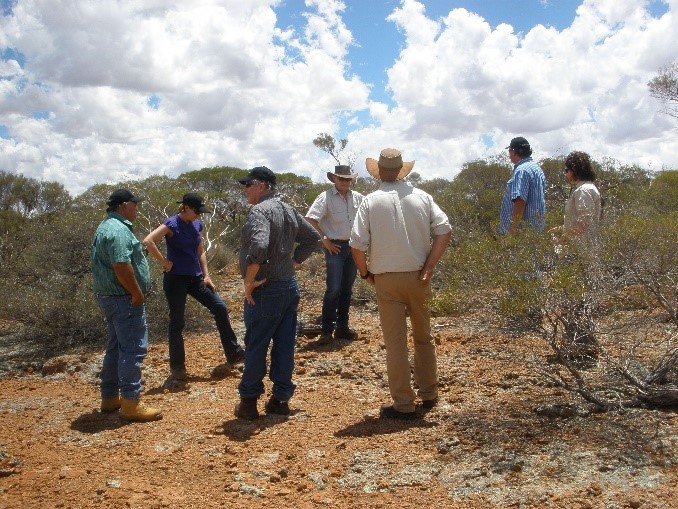When companies think about community engagement it’s often from a statutory requirement point of view rather than a means of encouraging inclusiveness or positive outcomes. Often it’s something that is done, rather than something that is nurtured and leveraged for mutual benefit.
Typically, it’s the companies’ outcomes that drive the engagement approach rather than a desire to understand the challenges and concerns facing the community.
Below are some common considerations each company should think through when implementing their engagement activities. When time is spent understanding a community, their desires and their concerns, strong relationships can be built through trust and respect, which in turn form long term productive relationship.
Selected approach to consultation
Before commencing any community engagement activities, companies should consider the most appropriate level of engagement along with identifying an approach to achieve the most successful outcomes. Each community will have different requirements and concerns, therefore, needing a different approach. In order to determine an approach, it can be useful to think about; who needs to be consulted, over what topics and for what purpose.
The International Association for Public Participation (IAP2) has developed the following public participation spectrum to help companies define their approach:
| LEVEL | GOAL | EXAMPLES |
| Inform | To provide balanced and objective information to assist understanding about something that is going to happen or has happened. | One way communications: facts sheets, websites, newsletters, emails, information booths. |
| Consult | To obtain feedback about ideas on rationale, alternatives and proposals to inform decision making. | Two way communications: 1-on-1 meetings, focus group discussions, surveys, public meetings, community briefings. |
| Involve | To work directly throughout the process to help identify issues and views to ensure that concerns and aspirations are understood and considered. | Two way communications: workshops, deliberative polling. |
| Collaborate | Working together to develop understanding of all issues and interests to work out alternatives and identify preferred solutions. | Two way communications: advisory committees, consensus-building, participatory decision making. |
| Empower | To place final decision making in the hands of the public. | Two way communications: ballots, delegated decisions, citizen juries. |
Consultation fatigue
Not all communities will have the capacity to place the level of importance and priority on decision making and outcomes as the company may. When approaching community members to be involved, there is a risk of overloading their capacity, resulting in stress, fatigue and frustration. This doesn’t mean the community doesn’t have the right to be involved, although it is important to avoid making community involvement too dependent upon a number of key stakeholders, instead think how capacity can be built across a wider range of community members.
Inclusive community development
Community development projects contribute to various community economies; however, the fortune may not reach all members of the community, causing division over who benefits and who doesn’t. An open and inclusive approach, which is clearly planned and documented, can go a long way to reducing internal conflicts and angst amongst community members.
Cross cultural differences
It is important for companies to consider cultural differences between themselves and the communities they are operating in, prior to commencing engagement activities. Some of these may include;
- Communication barriers: language barriers (written and spoken), cross-cultural communication issues, government or company specific jargon. Ensure plain user friendly language is used to make the information accessible to all and provide access to interpreters if required.
- Discomfort with formal process: including techniques of engagement e.g. small group meetings versus large group meetings and forums. Ensure community members are comfortable with the proposed situation before placing them into an uncomfortable circumstance.
- Lack of accessibility: including physical access and remote location issues. Reduce the distance by traveling into the community; this will also help build a better understanding of the community and their needs and concerns.
- Negative social attitudes: whilst work is being done to create a better understanding of various cultures, negative attitudes are still present. Facilitate cross cultural awareness programs within the work place to bridge the gap and create broader understanding. Ensure your community engagement approach is being implemented by the appropriate people.
- Family norms and hierarchy: be aware and respectful of age considerations and extended family and kinship systems. Ensure that the appropriate decision-makers and where relevant extended family members are included in important meetings and decisions.
- Gender: when organising meetings, discuss whether or not the topic is suitable for everyone or if the issue should specifically be discussed with men or women only.

Communities are complex and dynamic and can respond differently to companies’ efforts to engage with them, furthermore there is no assurance that what works for one will work for all. At the end of the day communities want a more active role in participating in the planning of a project and community developments. If you bring an open and inclusive approach so will the community, in turn creating a relationship built on trust and respect, that will deliver mutually beneficial outcomes.
If you need help with community mapping, engagement strategies and planning don’t hesitate to contact us at Integrate Sustainability, we can work with you to tailor an approach to assist you achieving positive and sustainable outcomes.

